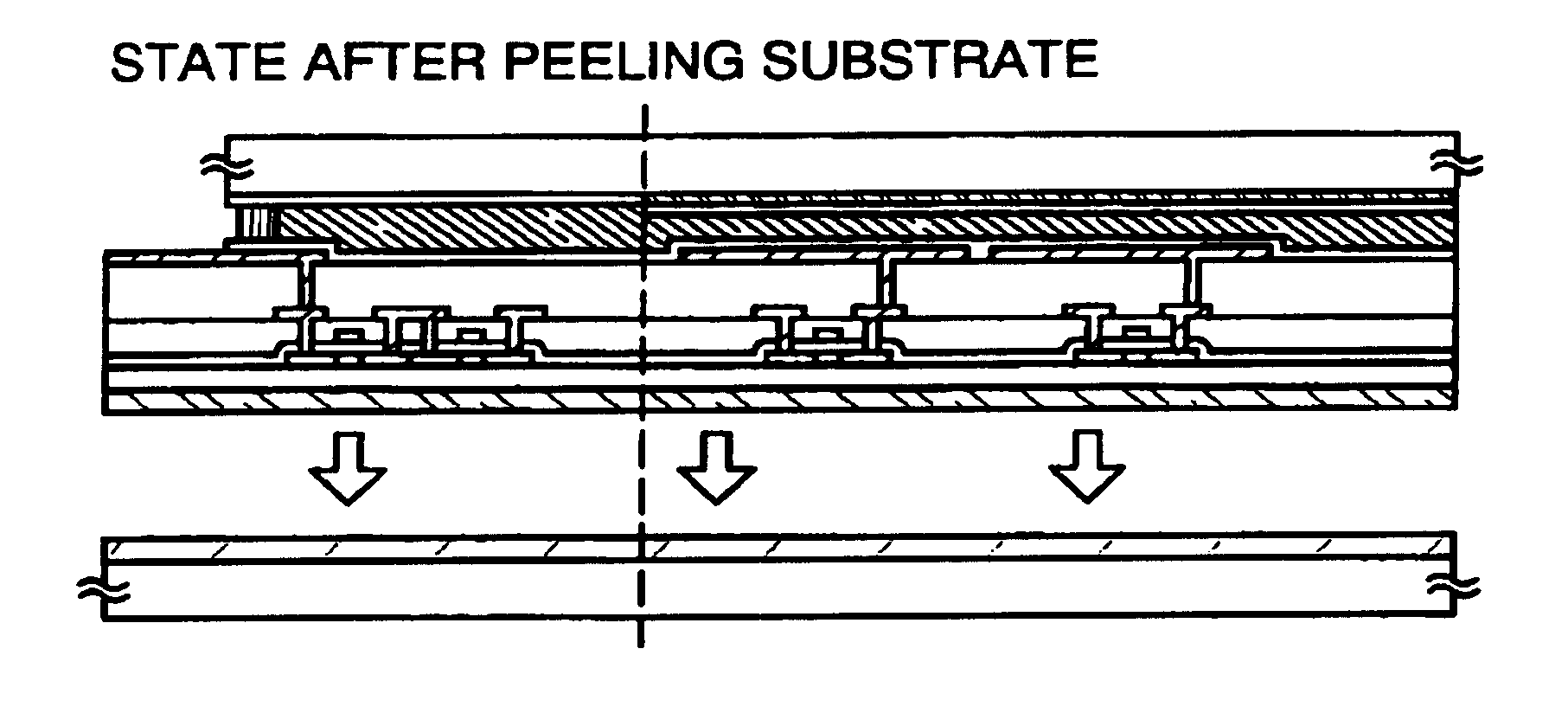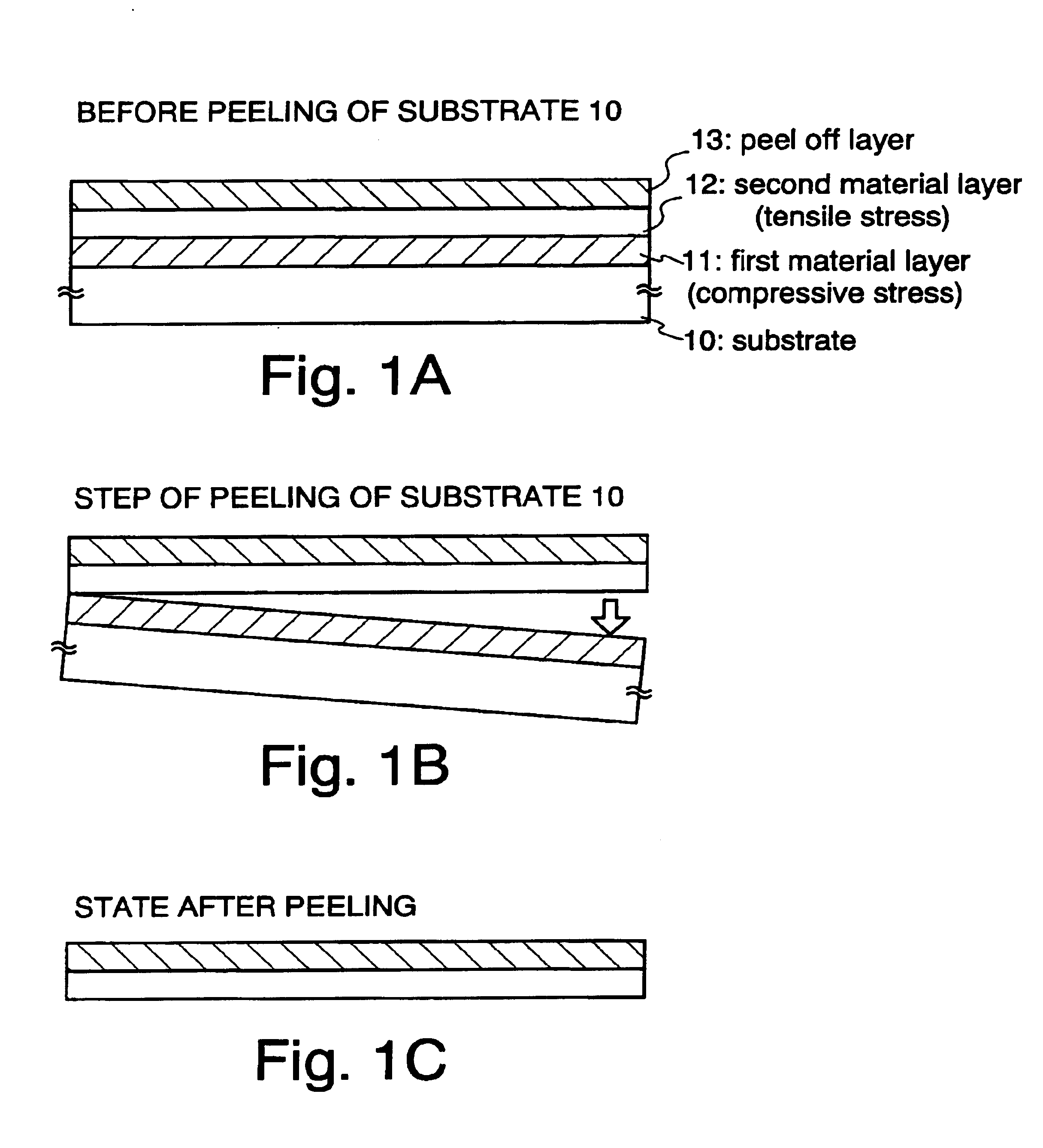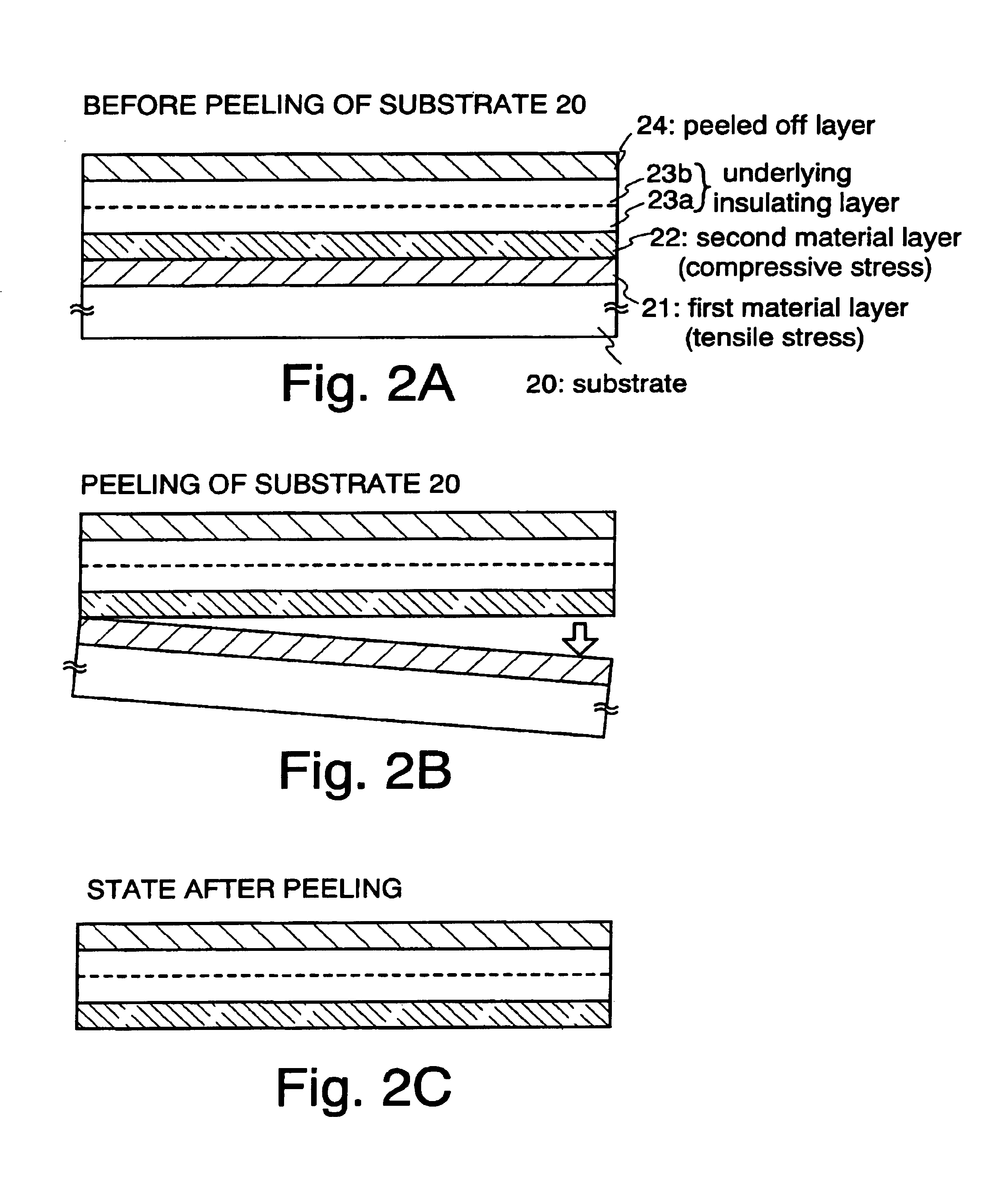Method of peeling off and method of manufacturing semiconductor device
a technology of peeling off and manufacturing method, which is applied in the direction of semiconductor devices, electrical devices, transistors, etc., can solve the problems of difficult and heavy cracking, inability to form any tft with electric characteristics, and difficulty in cracking and heavyness
- Summary
- Abstract
- Description
- Claims
- Application Information
AI Technical Summary
Benefits of technology
Problems solved by technology
Method used
Image
Examples
embodiment 1
[0084]Hereinafter, typical peeling procedures of the invention will be described concisely with reference to FIG. 1
[0085]In FIG. 1A, the reference numeral 10 denotes a substrate, 11 denotes a first material layer having a tensile stress, 12 denotes a material layer having a compressive stress, and 13 denotes a peeled off layer.
[0086]In FIG. 1A, the substrate 10 may be a quartz substrate, a ceramic substrate or the like. Further, a silicon substrate, a metal substrate, or a stainless steel substrate may be used.
[0087]At first, as illustrated in FIG. 1A, the first material layer 11 is formed on the substrate 10. The first material layer 11 may have a tensile stress even if it has a compressive stress immediately after film formation and it is important for the layer to use a material causing no abnormality such as peeling by heating treatment or laser beam radiating treatment in the peeled off layer formation and having a tensile stress in a range of 1 to 1×1010 (Dyne / cm2) after the p...
embodiment 2
[0098]In this embodiment, the peeling procedure for peeling a substrate while preventing diffusion of impurities from a first material layer and the substrate after an underlying insulating layer is formed adjacently to a peeled off layer will concisely be described with reference to FIG. 2.
[0099]In FIG. 2A, the reference numeral 20 denotes a substrate, 21 denotes a first material layer having a tensile stress, 22 denotes a second material layer having a compressive stress, 23a and 23b each denote an underlying insulating layer, and 24 denotes a peeled off layer.
[0100]In FIG. 2A, the substrate 20 may be a glass substrate, a quartz substrate, a ceramic substrate or the like. Further, a silicon substrate, a metal substrate, or a stainless steel substrate may be used.
[0101]At first, as illustrated in FIG. 2A, the first material layer 21 is formed on the substrate 20. The first material layer 21 may have a compressive stress or a tensile stress immediately after film formation and it is...
embodiment 3
[0115]In this embodiment, in addition to the embodiment 1, an example where laser beam radiating or heating treatment is carried out in order to promote peeling will be described with reference to FIG. 4.
[0116]In FIG. 4A, the reference numeral 40 denotes a substrate, 41 denotes a first material layer, 42 denotes a second material layer, and 43 denotes a peeled off layer.
[0117]Since the process to form up to the peeled off layer 43 is same as that in the embodiment 1, the description will be omitted.
[0118]After the peeled off layer 43 is formed, laser beam radiation is carried out (FIG. 3A). Laser beam to be employed includes gas laser such as excimer laser, solid laser of YVO4 laser, YAG laser, and semiconductor laser. The state of laser oscillation may be both continuous oscillation and pulsed oscillation and the shape of the laser beam is also optionally linear, rectangular, circular, or elliptical. The wavelength to be employed may be fundamental, second higher harmonics, or thir...
PUM
 Login to View More
Login to View More Abstract
Description
Claims
Application Information
 Login to View More
Login to View More - Generate Ideas
- Intellectual Property
- Life Sciences
- Materials
- Tech Scout
- Unparalleled Data Quality
- Higher Quality Content
- 60% Fewer Hallucinations
Browse by: Latest US Patents, China's latest patents, Technical Efficacy Thesaurus, Application Domain, Technology Topic, Popular Technical Reports.
© 2025 PatSnap. All rights reserved.Legal|Privacy policy|Modern Slavery Act Transparency Statement|Sitemap|About US| Contact US: help@patsnap.com



